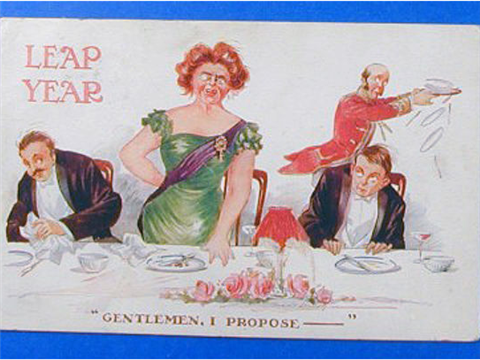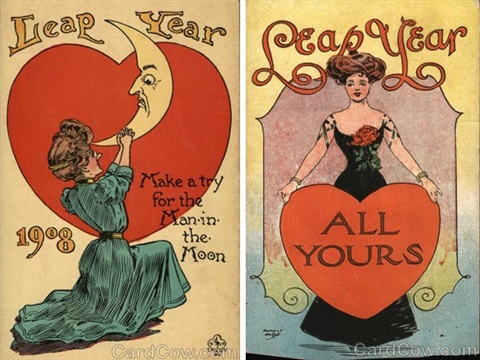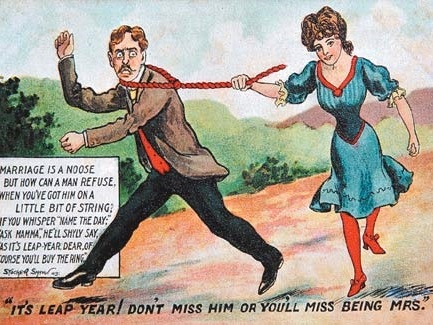ONE EXTRA DAY EVERY 4 YEARS - DO WE NEED THIS TO PROPOSE? OR SHALL WE JUST GO DOWN THE PUB?
It’s strange there is still a UK tradition where the only time women are expected to propose to their male partners is on the 29th February during a leap year.
Leap year or not, does it really matter who proposes to whom, or why or how?
There’s nothing stopping you asking your partners on the 1,460 other days in between February 29ths, we don’t need a designated day to tell us to propose.
Also known as Bachelors’ Day, it’s an Irish tradition dating back to the 5th century. Legend has it St. Brigid of Kildare complained to St. Patrick that maidens had to wait too long for their suitors to ask for their hand and so St. Patrick decreed that on the extra day of a leap year, women could propose to men. Full marks to St. Brigid for forward-thinking feminism!
Irish monks then took this to Scotland and in 1288, Queen Margaret passed a law allowing women to propose to their chosen sweetheart on February 29th.
Queen Margaret of Scotland was apparently five years old when she came up with the notorious February 29 proposal trap in 1288, a child this age is still learning to regulate their emotions, and will still be prone to meltdowns over something as small as a spilled glass of milk, which begs the question who allowed this to happen?
According to tradition women either have to wear breeches or a scarlet petticoat to pop the question.
Breeches were the equivalent to Lycra, an unflattering piece of clothing and substitute for a trouser which covered the body from the waist down with separate coverings for each leg, usually stopping just below the knee, though in some cases reaching to the ankles. The breeches were normally closed and fastened about the leg, along its open seams at varied lengths, and to the knee, by either buttons or by a drawstring, or by one or more straps and buckle or brooches.
As for a scarlett petticoat, thank god for Amazon! Although back in the day probably easier to acquire for such an occasion!
If a man did refuse the proposal, he would be fined a kiss, a silk dress or twelve pairs of gloves. The dress useful to place over the head of one embarrassed female who wished she hadn’t bothered and who needs 12 pairs of gloves, even in the harshest of weather, this is not only impractical but takes up unnecessary drawer space! However, the real intention was that the woman could wear the gloves to hide the embarrassment of not having an engagement ring. Not all at once of course – that would just be plain silly and very difficult to achieve even with the thinnest of fingers!
The tradition was also introduced to balance the traditional roles of men and women in a similar way to how leap day balances the calendar. Where others say the tradition of women proposing on this day goes back to the times when the Leap Year day was not recognised by English law. Under this theory, if the day had no legal status, it was therefore acceptable for women to break with the traditional convention of a man proposing.
So in a world where only 5% of women actually pop the question, is it because we are just waiting for the 29th February to roll round choosing to use these old-fashioned gender rules when it comes to something as important as to whom we want to spend our life with or are we just waiting for our partner to pluck up courage in the other 1,460 days?
For those women who fancy being the one to get down on one knee but perhaps don’t have the confidence, the 29th February can be the extra push and invitation to get it done. A kind of one-off 24 hour offer to take advantage of.
Back then, proposing to your man, even on February 29th, was seen as a bold move, whereas now it’s not such a big deal for women to be proposing. It’s also true you don’t need to wait for a special day to tell someone you want to spend the rest of your life with them. When you know, you know. Make mine a pint!






